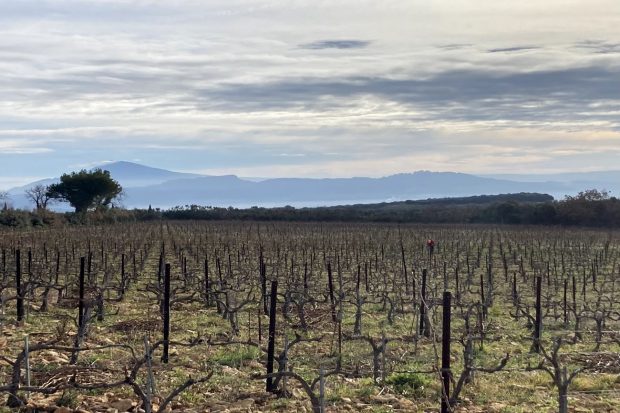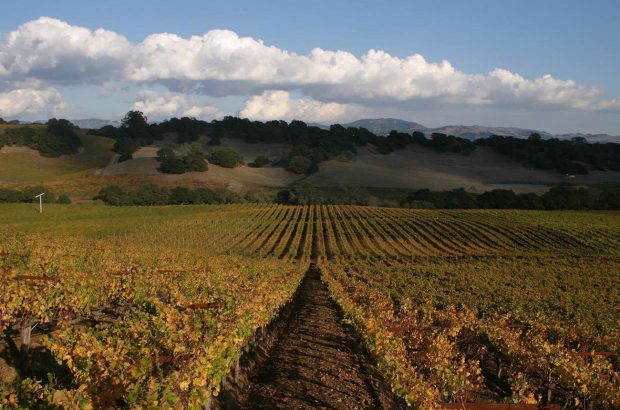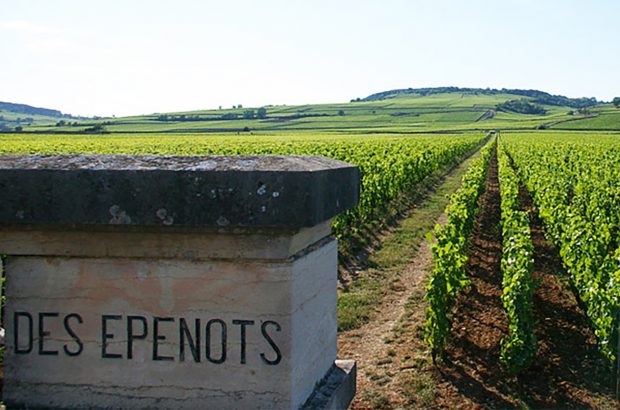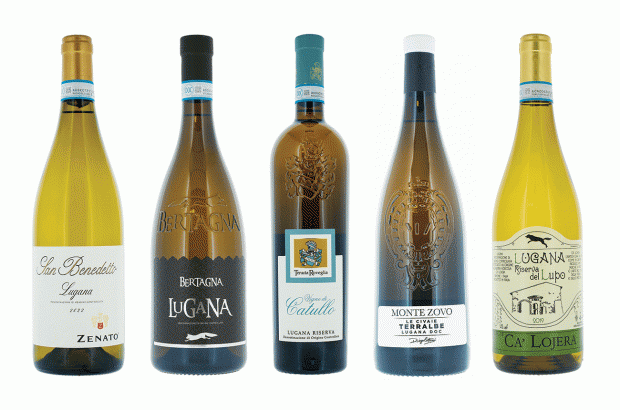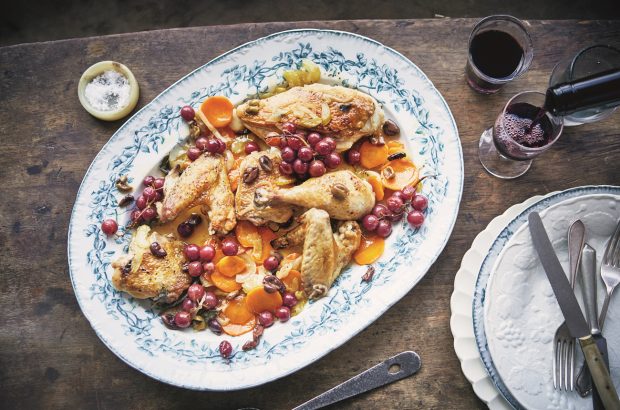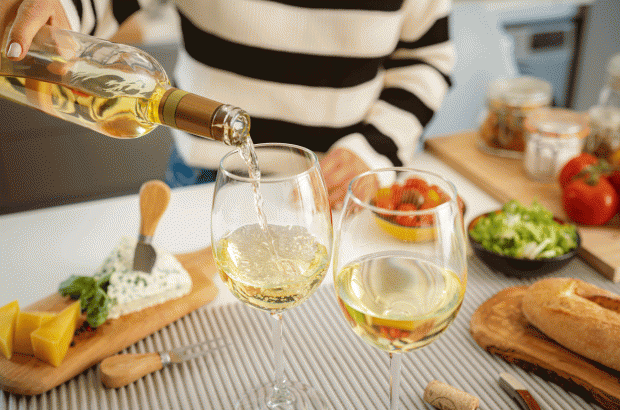Château de Fesles: a sweet wine haven
More tea vicar? One sugar or two? Cake, biscuit? When it comes to food goodies the more sugar the better, but when it comes to wine? Let’s be honest, the last thing you’d offer the old boy on a Sunday afternoon would be a glass of sweet wine. Wine may be booming but ‘sweeties’ are struggling, which is sad when you consider that some of the world’s finest wines fall into this untrendy category. As the new millennium dawns, the sweet wine future is at best uncertain, that is, until you visit Château de Fesles.
The château is located in the village of Thouarcé, a close neighbour of the famous sweet wine hamlet of Bonnezeaux, in the heart of the Loire Valley’s Anjou-Saumur region. Founded in 1070 on the summit of one of the four hills that have the right to adopt the Bonnezeaux appellation, it dominates the Layon Valley and its river. ‘You can see 21 spires from the third floor,’ notes owner Bernard Germain.Our wine books may give the mighty Loire all the accolades, but it is well to remember that its tributaries play more than a supporting role, especially when you’re talking sweet wines. At Bonnezeaux it’s the Layon that helps create the microclimate and mists that promote the all-important noble rot, the beneficial disease that not only shrivels the grapes to concentrate their sugars but also gives the wines their classic honeyed, yeast flavours.
The château was bought in 1996 by Bernard Germain, a sixth generation winegrower from Bordeaux who, although the proud owner of several Bordeaux châteaux, including the Saint-Emilion grand cru Yon-Figeac, had a burning desire to produce a great sweet wine. The mention of Sauternes brings a look of indifference: ‘I’m not so convinced about many Sauternes,’ says Germain. ‘Many have a poor sugar-acid balance and often one glass is enough.’ After looking to Hungary with a thirst to make, ‘the finest Tokaji’, Germain saw Fesles and immediately put his money where his mouth was, convinced of its potential and knowing that in Chenin Blanc with its high acid kick he had a grape already producing world class sweeties. Luckily, the property was in ‘very good nick’ thanks to the refurbishment started in 1991 by the previous owner Gaston Lenôtre, who had decorated in the traditional white and rose colours of the region, and enhanced both the vineyards and the extensive 200-variety rose garden.
With an eye to history, Germain’s German-born partner, Lisa Heidemanns, notes that the vineyards were mentioned in documents 1,000 years ago and that the 35 hectares (ha) at the elegant château boast vines that average 50 years old. The Chenin vines respond well to the schistous soil, the steep south-facing slopes and the restricted rainfall, while the vieilles vines give the wines a layered complexity. It is the micro-climate that excites her. ‘We actually sit in a micro-climate within a micro-climate,’ she explains, ‘which gives us noble rot every year to produce wines of great elegance and finesse’. A glance at rainfall figures tells you that the micro-climate at Fesles is special, for though located within a region with an average rainfall of 600 mm, it receives only 460. ‘Sauternes gets over 1,000 mm,’ she grins.As well as Bonnezeaux, Château de Fesles also produces Anjou-Villages Rouge, but Germain’s commitment to sweeties is emphasised up the road in Coteaux du Layon (Chaume) where he also owns Château de la Guimonière and Château de la Roulerie. Don’t worry if the mention of several sweet Loire appellations sends you scuttling for a map, even the French get confused – so much so that a change may be on the way. In a nutshell, the current ‘pyramid’ system includes the generic ‘Coteaux du Layon’ at the bottom with six communes and one village (Chaume) occupying the middle slice. The tip of the pyramid holds only the crus of Bonnezeaux and Quarts-de-Chaume. To confuse matters more, the latter is, as its name suggests, the best ‘quarter’ of the Chaume vineyards.
If that’s as clear as mud, you’ll understand why one system being talked about at the moment gets my vote. In it, the bottom sector stays the same, as does the middle slice with the exception of the village vineyards of Chaume, which move up to join the two crus at the top. The six communes of the middle slice would be given a premier cru title, while the top three are rewarded with a grand cru status. So, if this system receives formal approval, Château de Fesles’ premier league position would be enhanced by a grand cru label.
The process
The regularity of noble rot lifts the status of a Loire sweet wine vineyard and also reduces the yields and drives up potential alcohol: ‘Our yield is 25hl/ha, and we easily exceed the minimum potential alcohol “at the vine”,’ explains Germain.To achieve the best possible fruit he prunes short and limits the number of buds, as well as pruning in summer to reduce bunches and concentrate the juice; he also systematically removes leaves to sun the bunches, and allows grass to grow around the vines to brake an over-prolific growth. As with all great sweet wine vineyards, the uneven development of noble rot necessitates the process of triage: ‘In 1996, we picked six times in order to select only the fully botrytised grapes,’ Germain notes.
The shrivelled grapes are ‘sorted for quality’ on arrival before being slowly pressed for about six hours. This leisurely pressing speed is one of the big steps forward in quality sweet wine production over recent years, but, ironically, was an integral part of the great sweet Loire of the distant past. The must is cold settled before being placed in 400l French oak barrels to ferment, which generally takes three to four months. The wines are aged for about 12 months in 400l barrels in the cool cellars: ‘We don’t use sulphur during ageing,’ adds Heidemanns, ‘but we bottle under sterile conditions’.
A sweeter future?
Germain may have come to Bonnezeaux with an impressive CV detailing his 25 years in the wine industry, but this evidently meant nought to his neighbours back in 1996. ‘They thought our sweet wines would be difficult to make and sell, and when we started to mature them in new French oak, well, then they knew we were crazy,’ smiles Heidemanns. Smile she might, for the same winemakers who had predicted that Germain would leave the château more quickly than Monsieur Lenôtre, are also now ignoring local tradition and using new oak! With Château de Fesles now experimenting with two-year maturation periods for the 1999, it seems that it won’t be long before Germain turns all the sweet Loire traditions on their head.
In a world where many wines are consumed far too young, the sight and smell of new barrels has the further advantage of ensuring the wines are enjoyed older, when their honeyed complexities are emerging.
Since taking over the reins at Château de Fesles, Germain has seen an array of vintages, but he’s confident of their respective merits: ‘From the top, it goes 1997, 1996, 1995, 1999 and 1998. The 1997 is outstanding, with great balance and intensity of honeyed fruit, some say it’s comparable to the legendary 1947, while the 1996 is dryer with lower acidity – a result of the autumn storms. The 1995 was the beautiful product of a beautiful autumn, while 1999 was a difficult year resulting in seven separate pickings, the last of which was December 3rd! 1998 was more difficult still, with heavy rains demanding severe selection and patience. Many picked early, but those who waited were rewarded with good weather in early November: ‘Our three pickings in November were the best – the last was even picked frozen!’ he laughs.Germain and Heidemanns are mad about sweet wine. The proof can be tasted in their wines, but their dedication to the cause goes far deeper, for they are building a temple to the sweet wines of the world. ‘Our museum will feature all of the world’s great sweet wines under one roof,’ describes Heidemanns: ‘From Austria to Romania.’ Perhaps this is the start of a sweet wine renaissance, for this laudable move may be the boost we all need to reconsider the role of ‘sweeties’ in our vinous lives.
https://www.decanter.com/learn/wset/sweet-wines-methods-of-production-wset-level-2-288973/






